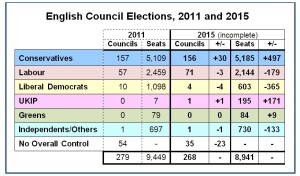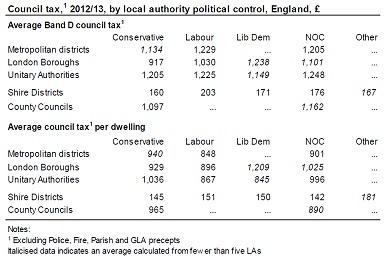Jon Bloomfield
The election result has been a game changer. The electorate has turned down the Theresa May/Daily Mail offer of a hard Brexit and the threat of walking away from the negotiations with the European Union. The issue did not get the in-depth discussion during the election that it should have, but the result is a rebuff to Mrs. May and all her Government Ministers claiming that ‘no deal is better than a bad deal.’
The new parliamentary arithmetic means that the road is now open to negotiate a soft Brexit. That means accepting the result of the 23rd June referendum but recognising that for reasons of economics, geography, history and culture a close working partnership between the UK and the Continent is in the interests of both parties. Hence, the UK should seek a partnership and cooperation arrangement with the EU across a whole range of areas – the economy, security, culture, the environment, research – where the UK has vital interests with our closest neighbours.
Furthermore, events are pushing the EU as well as the UK in that direction. Firstly, after the latest terrorist horrors in Manchester and London, who is seriously going to suggest that the UK should pull out of its intelligence sharing and security cooperation with European police and counter-terrorism services? A handful of little Englander ideologues will object to UK cooperation because it is overseen by the European Court of Justice but that will not resonate on many doorsteps. Secondly, the disastrous performance of President Trump in Saudi Arabia, at NATO and the G7 has given renewed momentum to the desire amongst European leaders for greater self-reliance. The swift declaration with the Chinese government upholding their joint commitment to the Paris agreement on climate change after Trump’s announcement of US withdrawal is an early example. Thirdly, the election of Emmanuel Macron as the new French President adds a powerful, new political figure pushing for collective action at the European level.
Until now the main political obstacle has appeared to be migration. The May government has argued that the UK must pull out of the Single Market and the Customs Union because membership of either is incompatible with the UK controlling its own migration policy. This view is regularly echoed by EU leaders and Commission President Juncker who talk about Single Market membership requiring adherence to the four principles of the Treaty of Rome, including the free movement of labour. Yet the way to combine a migration policy that is fluid enough to preserve economic dynamism and rigorous enough to inspire public confidence lies in articles 48 and 49 of the original treaty of Rome. Article 48 states that “freedom of movement for workers shall entail the right (a) to accept offers of employment actually made; (b) to move freely within the territory of member states for this purpose.” Article 49 calls for “the achievement of a balance between supply and demand in the employment market in such a way as to avoid serious threats to the standard of living and level of employment in the various regions and industries”.
In other words, these have to be managed processes. The treaty is not a neoliberal free for all. Freedom of movement is specifically tied to agreed, contracted employment and recognises the need to balance labour supply and demand. Here is the basis for a serious negotiation between the UK and the rest of the EU.
Importantly, this is the view of Jean Pisani Ferry, the author of Macron’s Presidential policy programme and now his chief economic adviser. Nine months ago Ferry wrote a pamphlet for the influential Breughel think tank with four other senior EU policy makers entitled Europe After Brexit. The authors argue that in an increasingly volatile world, neither the EU nor the UK have an interest in a divorce that diminishes their influence, especially as the balance of economic power shifts away from the North-Atlantic world. They propose a new form of collaboration between the EU and the UK, a continental partnership which would consist of participating in the movement of goods, services and capital and some additional labour mobility, as well as in a new system of inter-governmental decision making and enforcement of common rules to protect the homogeneity of their deeply integrated economies. On migration, the Brueghel authors see it primarily from a functional, economic rather than constitutional/political viewpoint. Hence managed labour mobility is required for the interdependent parts of the European economies to function smoothly and to enable firms to transfer staff to other countries easily, but there is no legal necessity for unrestricted labour mobility. Ferry’s co-authors are policy and political heavyweights including Norbert Röttgen, the Christian Democrat Chairman of the Foreign Affairs Committee of the German Bundestag and Andre Sapir, an adviser to two previous European Commission Presidents. Thus, there is intellectual heft behind the case for pursuing a managed migration policy within the framework of the Single Market. Currently, the 10,000 lorries a day that pass through Dover are the most visible indicator of how interdependent the UK and Continental economies have become. That is why it is so crucial to both the UK’s and Europe’s economic well-being that this tariff-free, seamless trade is retained. There is a viable political path here for a soft Brexit and now there is also a window of opportunity.
Throughout the election Jeremy Corbyn’s team took the political initiative. He should keep this momentum and bring the new parliamentary arithmetic to bear. For starters, his Labour negotiating team should:
* bring together all MPs regardless of party who want to pursue the soft Brexit option. They should re-draft the terms of the UK negotiating position and seek to win Parliamentary approval for it.
* open informal discussions with Pisani Ferry in France, Röttgen in Germany and other key players across Europe.
Calls for a second referendum are dead. They hampered both the Liberal Democrats and the SNP in the election. But what is on the cards is the negotiation of a proper, collaborative partnership with the EU. It will be complicated and difficult but the opening is now there. Can a progressive alliance come together to take it?
Jon Bloomfield is an Honorary Research Fellow at INLOGOV and an expert on EU funding, European and EU issues of regional and local government who carries out research on the EU and contributes to INLOGOV’s post-graduate programmes.




